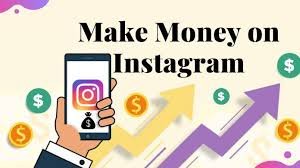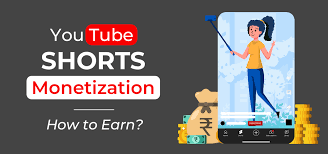In today’s digital world, content is king—but making money from that content requires more than just publishing articles or videos. With the right monetization strategies, you can turn your website, blog, or social media presence into a sustainable income stream. Whether you’re a beginner or have been running a website for years, there are multiple ways to convert your traffic and engagement into cash.
In this post, we’ll explore some of the most effective methods to monetize your content in 2025 and beyond. By implementing these strategies, you can boost your earnings and build a more profitable online presence.
1. Affiliate Marketing: Earn Money by Promoting Products
Affiliate marketing is one of the easiest and most popular ways to monetize your content. In affiliate marketing, you promote third-party products or services, and earn a commission whenever a visitor makes a purchase through your referral link.
To make affiliate marketing work for you, it’s essential to promote products that align with your niche. For example, if you have a tech blog, promote gadgets, software, or other related products. Likewise, fashion bloggers might promote clothing or accessories.
Here are some tips for successful affiliate marketing:
- Be transparent: Always disclose affiliate links to your audience. Transparency builds trust.
- Create valuable content: Craft product reviews, tutorials, or how-to articles where you naturally integrate affiliate links.
- Choose reputable programs: Join well-established affiliate programs like Amazon Associates, ShareASale, or CJ Affiliate for high-quality products.
2. Display Ads: Monetize Your Traffic with Minimal Effort
If you have a steady stream of website visitors, displaying ads can be a great way to earn passive income. Ad networks like Google AdSense, Mediavine, and AdThrive allow you to place ads on your website or blog. Every time a visitor clicks on an ad (CPC) or views it (CPM), you earn a small amount of revenue.
Although display ads don’t require much active effort once set up, it’s important to manage ad placements for an optimal balance between user experience and monetization. Too many intrusive ads or pop-ups can frustrate visitors and hurt your website’s engagement. Here’s how to maximize earnings from ads:
- Optimize ad placement: Place ads in visible but non-intrusive areas, like in-content or sidebar spots.
- Increase traffic: The more visitors you have, the higher your earnings from display ads. Focus on driving targeted traffic through SEO and content marketing.
- Experiment with ad networks: Explore different ad networks to see which one works best for your site’s traffic and content.

3. Create and Sell Digital Products: Passive Income Potential
Creating and selling digital products is one of the best ways to monetize your content, especially if you have expertise in a particular field. Once you create a digital product (such as an eBook, online course, or printable), you can sell it to your audience repeatedly, generating passive income.
Some popular digital products include:
- eBooks and guides: Share your knowledge in a well-written eBook or a detailed guide.
- Online courses: If you’re skilled in a particular area, create an online course and sell it on your website or platforms like Teachable or Udemy.
- Printables: Printable planners, worksheets, or templates are highly popular and cost-effective digital products to sell.
- Stock photos or graphics: If you’re a photographer or designer, you can sell your work through your website or marketplaces like Etsy or Shutterstock.
The key to success in selling digital products is to understand your audience’s needs and offer something that provides real value.
4. Offer Freelance Services: Monetize Your Expertise
If you have a skill that others need, offering freelance services can be a highly profitable way to monetize your content. Whether it’s web design, copywriting, social media management, or consulting, you can leverage your online presence to find clients.
Create a dedicated “Services” page on your website where you list the services you offer, pricing, and past work. Promoting your services through blog posts or case studies that showcase your expertise can also help you attract potential clients.
Here are some tips for offering freelance services:
- Build a strong portfolio: Showcase your best work and highlight results that demonstrate your skill.
- Niche down: Specializing in a specific niche (e.g., “SEO for health blogs” or “social media management for small businesses”) can help you stand out.
- Network and market your services: Use your website, social media, and email newsletters to promote your freelance offerings.

5. Launch a Membership or Subscription Program
If your content provides ongoing value, consider launching a membership or subscription program. With a membership site, you can offer exclusive content, resources, or even one-on-one services in exchange for a monthly or yearly fee.
Subscription-based models work well for niche audiences who are looking for high-quality, specialized content. Here are a few membership model ideas:
- Exclusive blog posts or videos: Offer your most in-depth or specialized content to paying members only.
- Access to a community: Create a private forum, Facebook group, or Slack channel where paying members can engage with each other and access expert advice.
- Consultations or coaching: Offer members one-on-one consultations or group coaching sessions.
Platforms like MemberPress, Patreon, and Substack can help you set up and manage membership programs on your website.
6. Sponsored Content and Brand Collaborations
If you have a strong following and influence in your niche, brands may be interested in sponsoring your content. Sponsored posts, where companies pay you to create content around their products or services, can be highly lucrative.
When working with sponsors, always ensure that the product or service aligns with your values and your audience’s interests. Sponsored content should add value to your readers and not feel too promotional or forced.
Here are some tips for successful sponsored collaborations:
- Maintain transparency: Always disclose sponsored content to maintain trust with your audience.
- Create authentic content: Craft content that naturally integrates the sponsor’s message and provides value to your readers.
- Set clear terms: Define your rates and expectations with sponsors upfront to ensure a smooth partnership.

7. Sell Physical Products or Merchandise
Selling physical products or merchandise can be an excellent way to monetize your content, especially if you have a strong brand or following. Many content creators use platforms like Shopify, Printful, or Teespring to create and sell custom-branded merchandise, such as T-shirts, mugs, hats, and more.
If your niche or content resonates with your audience, they may be eager to purchase merchandise that reflects their interests.
Here are some ideas for physical products:
- Branded merchandise: T-shirts, mugs, and tote bags featuring your logo or catchy slogans related to your content.
- Products related to your niche: If you run a cooking blog, consider selling branded kitchen tools or cooking gear.
Conclusion
Monetizing your content and turning it into a profitable income stream doesn’t happen overnight, but with the right strategies in place, it’s entirely possible. From affiliate marketing and display ads to selling digital products and offering freelance services, there are plenty of ways to earn money from your website or blog in 2025.
By diversifying your income sources and consistently delivering valuable content, you can build a sustainable and profitable online business. Start implementing these strategies today, and watch your content go from clicks to cash.
Related Tags:
- Content monetization
- Online income strategies
- Affiliate marketing
- Display ads
- Digital products
- Freelance services
- Membership programs
- Sponsored content
- Website earnings
- Passive income
- Earning through blogging
- Monetizing content













